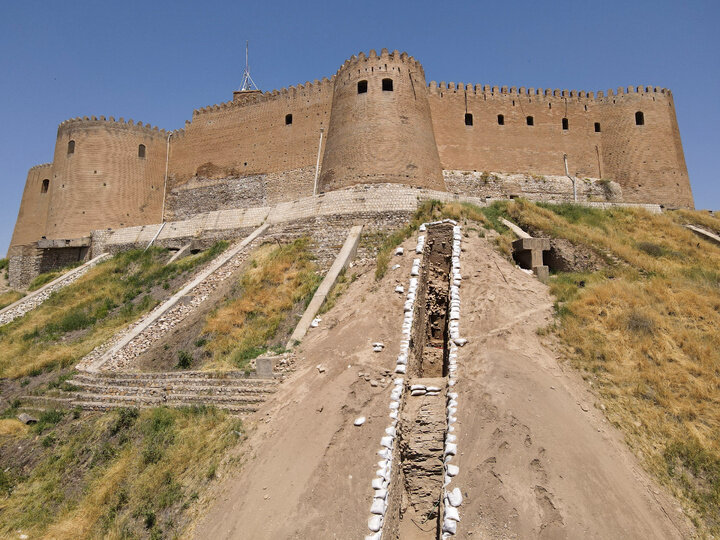Excavations unearth ancient layers of history at Falak ol-Aflak hill

TEHRAN – A team of archaeologists has embarked on a groundbreaking excavation project at Falak ol-Aflak hill, the site of the famed Sassanid-era fortress in Lorestan province.
With the official approval of the Research Institute of Cultural Heritage and Tourism, the expedition led by Hamzeh Qobadizadeh, an esteemed archaeologist, commenced the meticulous process of stratigraphic excavation aimed at uncovering layers of ancient civilizations.
The team explored a trench meagering 25 meters by two meters on the steep slope of the fortress's southern side, parallel to its tower No. 3, in a north-south direction.
The archaeological team, comprising members of the University of Kermanshah's archaeology department, meticulously conducted the excavation process based on natural stratification. They precisely documented and described each phenomenon and any changes within the layers, defining their spatial relationships.
Approximately 250 cubic meters of soil were excavated during the exploration, with the greatest depth measured at around 11 meters in the northern half relative to the fixed point, CHTN reported on Saturday.
Remarkably, the stratigraphic excavation unveiled a mosaic of historical periods, ranging from contemporary eras to ancient civilizations such as the ears of Ilkhanids, Seljuks, and Parthians, as well as the Iron Age, Bronze Age, and New Stone Age.
Qobadizadeh highlighted the significance of the discoveries, noting that the majority of excavation unearthed from the southern workshop pertained to contemporary periods. “This accumulation comprised architectural debris, waste remnants, and construction materials, forming thick sedimentary layers on the slope.”
Moreover, remnants of a residential area, including an adobe wall, plastered floors, and an oven, were uncovered at the southernmost part of the workshop.
Analysis suggests these structures likely date back to the late Qajar period and early Pahlavi era, shedding light on the evolution of settlement patterns over time.
In the northern section of the workshop, beneath contemporary debris, the team uncovered the first preserved layers, revealing stone-built walls adorned with plaster and a clay floor.
These remnants, possibly remnants of a pre-fortress structure, exhibit architectural features reminiscent of the Saluki and Ashkanid periods, the source reported.
The excavation also yielded notable findings from the Bronze and New Stone Ages, including Neolithic pottery and artifacts associated with early settlements.
Earlier this year, on January 31, Ali Darabi, the deputy minister of cultural heritage, announced that Iran had submitted a dossier on “Khorramabad's Valley and Falak-ol-Aflak Fortress” to the United Nations Educational, Scientific, and Cultural Organization for possible registration as a World Heritage.
The unmissable eight-towered fortress dominates Khorramabad as one of the most visited travel destinations in the region for both domestic and foreign sightseers.
The fortress dates from the Sassanid era (224–651). It seems particularly imposing and dramatic when floodlit at night, offering picturesque views of its encircling crenelated battlements.
AM
Leave a Comment